Sideboard: what is it and how to choose?
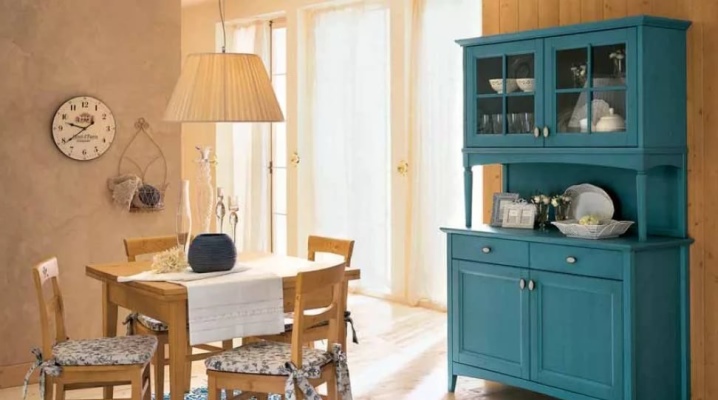
It is very important to correctly understand what it is - a sideboard. This type of furniture cannot be considered something old-fashioned and gone into oblivion. After all, knowing how to choose a good sideboard, you can create an interior that fully meets the basic design requirements.
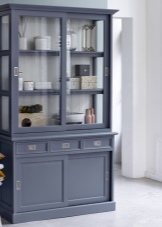
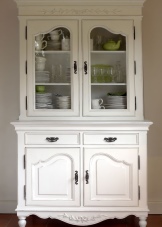
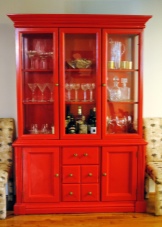
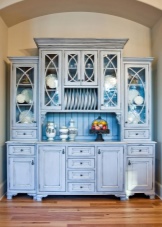
What it is?
It is difficult to find a person who could say exactly what the sideboard is and how it looks in life. There is even a popular stereotype that all such furniture is old-fashioned. Indeed, sideboards were actively used in the 1940s – 1960s. But they can still be applied today if you find a good model. The exact synonym for the word "sideboard" is the expression "low sideboard".
The sideboard usually kept:
- dishes;
- table linen;
- food products;
- beverages.
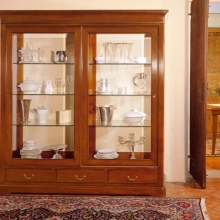
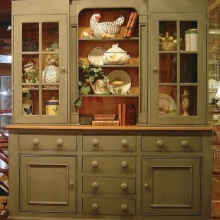
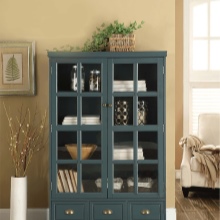
Therefore, the traditional place for installing a sideboard is kitchens and the rooms adjacent to them.
And in the most luxurious houses, where there were many rooms, sideboards were placed in dining rooms. After all, it was there that there was a need for them.



Having dealt with the main use of sideboards, it is worth considering that, nevertheless, this type of furniture is somewhat different from the sideboard.
Traditionally, the sideboards had only a single compartment, while the sideboards used a glazed top.
Now, however, this line is pretty blurred. Some sideboard models are deliberately made according to old drawings. Then they become an excellent filling for retro style apartments. However, they try to use mainly modern materials, limiting themselves to their antique decoration. The convenience of such a piece of furniture is completely preserved as a result of this approach.
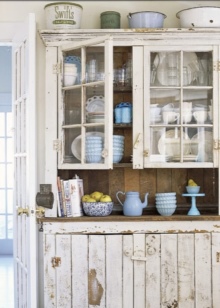

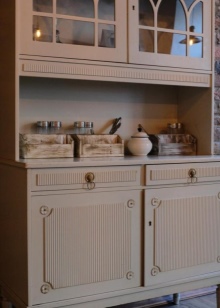
Views
Let's talk about the existing varieties of this piece of furniture.
Standard
The typical kitchen and dining sideboard these days is more in line with the old sideboard. It is also divided into 2 main parts. A glass frame is usually placed on top, covering the dishes or some other objects. All people pay their main attention to this part. At the bottom there is a closed capacious cabinet.
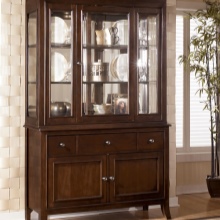

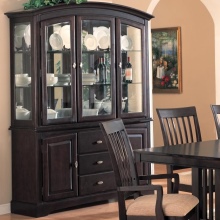
Things that are not of aesthetic value are put there:
- cutlery;
- various underwear;
- tablecloths, napkins;
- towels and similar accessories.
The height of the sideboard of the standard sample is a maximum of 2 m. Some models do not exceed 1 m. The shelves on top are mainly made of transparent glass. At the bottom, they are made of wood so that they can withstand a lot of stress.
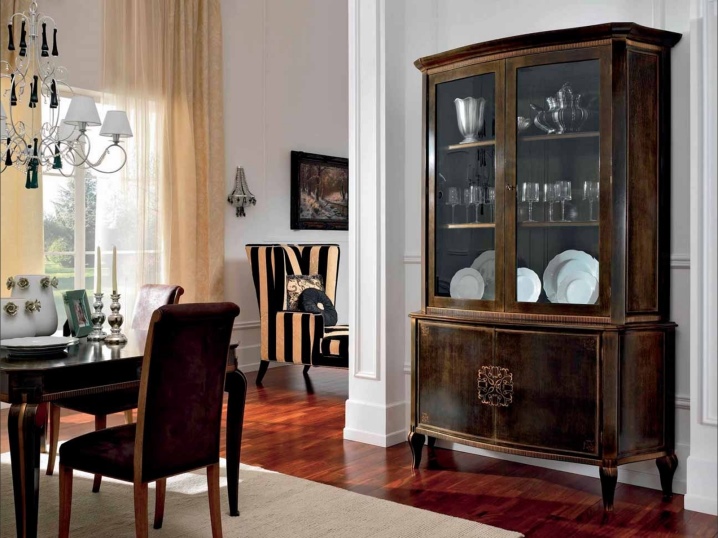
Some of the sideboard modifications involve the use of not ordinary shelves, but pull-out drawers.
The gap separating the two tiers is not available on all models. But if it is provided, you can put there:
- vase;
- a low pot of flowers;
- basket;
- fruits;
- newspapers magazines.
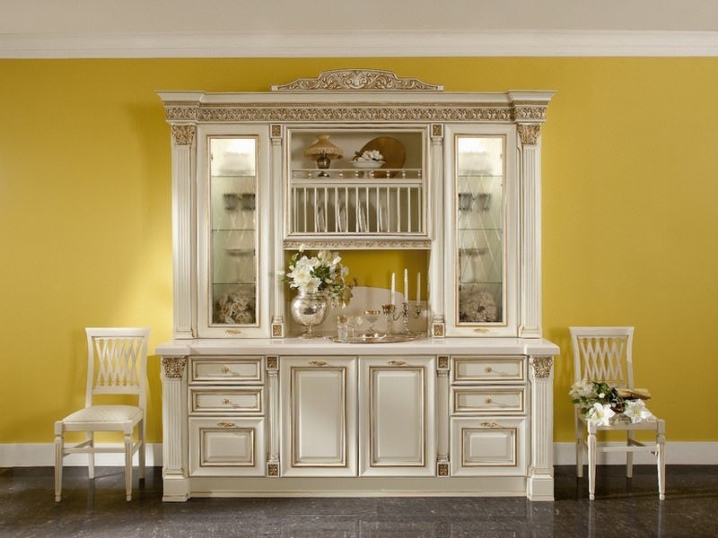
Some of the latest generation sideboards can be created with space for a TV (home theater, laptop, etc.). The number of furniture doors can be different - 2, 3 or 4. It is practiced to decorate the doors with patterns and fittings. Some designers recommend using stained-glass windows to decorate the cabinet. Sideboards are usually placed on 4 legs, but it is not difficult to find models without legs at all.

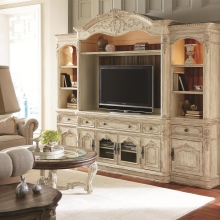
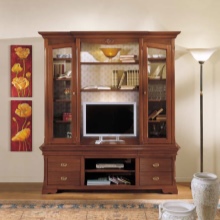
A simple floor cabinet in the kitchen usually has a display case. It allows you to flaunt everything that is placed inside and even on the mezzanine.

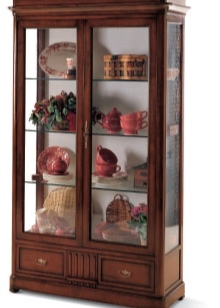

The reflection of the interior volume in the mirrored back wall visually enlarges the space of the cabinet and makes it more impressive.
Separately, it is worth mentioning the kitchen sideboards, which, along with the utensils, can accommodate:
- tea, coffee, cocoa;
- confectionery;
- sweets;
- cereals;
- salt, sugar.

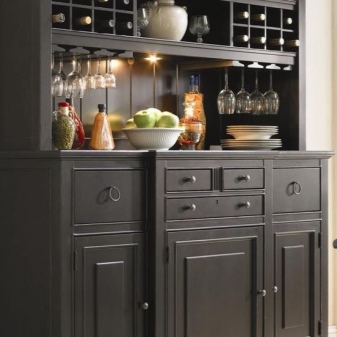
In libraries, schools, bookcases are often used. Any printed and handwritten editions are stored longer behind glazed shelves. They are reliably protected from moisture and dust. Taking care of books when using such furniture is simplified to a minimum. A book sideboard is more practical than stand-alone shelves.

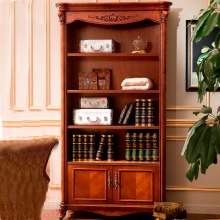
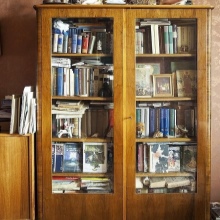
Angular
This kind of freestanding sideboards allows you to achieve:
- maximum functional use of space;
- attractive appearance;
- demonstration of the external beauty of all objects inside.
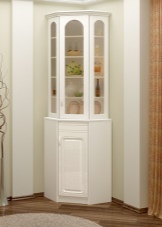

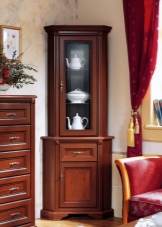
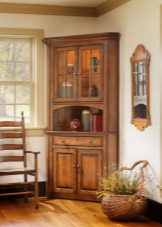
Corner sideboards can be designed for crockery, books or wine. The functionality of such furniture is quite large. However, the corner cabinet type is predominantly suitable for large rooms. In a small area, it is of little use. In addition, the selection of corner cabinets for the design of the room is very difficult.

Built in
This type of sideboard was once extremely popular. But now he is experiencing a rebirth after a temporary decline. Some modern modifications are even made with a bar and other attractive additions. Much depends on the thoughtfulness of the design. Only a carefully selected, adequate layout of the sideboard can guarantee comfort in everyday life.
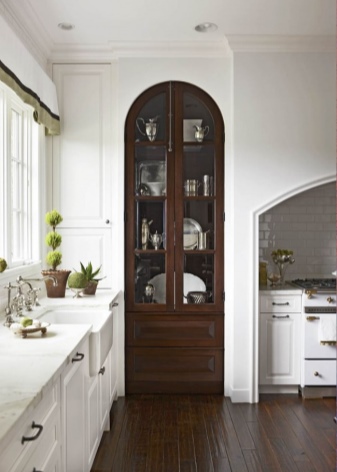

Slide
This type of sideboard is associated with something old-fashioned, and it seems that it cannot be used in a modern interior. There were "slides" in the pre-revolutionary period. Their name is due to the fact that the dishes are stacked inside just a slide. Designers are increasingly using sideboards-slides to decorate living rooms, kitchens-dining rooms and other rooms.
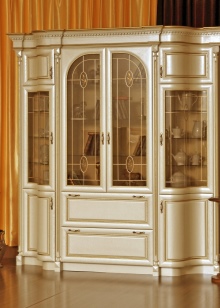
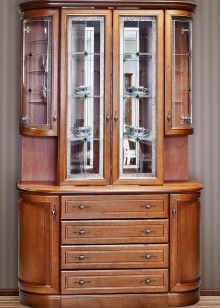
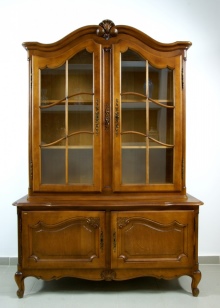
Fans of original design should pay attention to antique versions of such furniture: they are expensive and rarely found, but each piece is unique.
Dimensions (edit)
The height of a typical sideboard is usually 1.5-2 m. This solution is perfect even for small apartments. But a sideboard of a greater height can also be made to order. Typical narrow products have a width (at the top) of about 0.3 m. At the bottom, it reaches 0.5 m; both larger and smaller sideboards can be made to order.
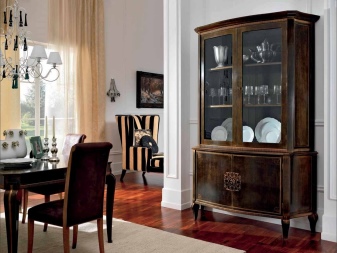

Design
A traditional Soviet-style cabinet looks like this:
- a curbstone with roll-out drawers or swing-open doors is placed below (these options are sometimes combined);
- open shelves or an opening cabinet are placed on top;
- the free area between the upper and lower tier is a tabletop or a display plane.
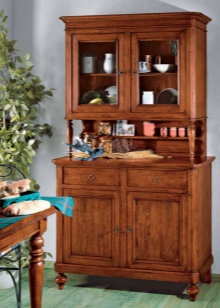
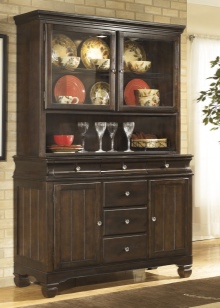
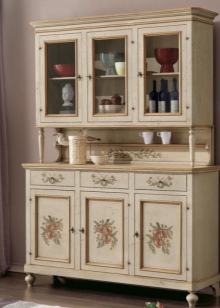
Do not think, however, that such a performance was developed precisely in the USSR. It appeared in a more or less full-fledged form by the end of the 17th century. Changes to the sideboard since then have been extremely minor. The reason is simple - the classic solution has proven its perfection and convenience in practice. Even products in the spirit of minimalism tend to gravitate towards the traditional device.
Of course, there are many other models that express modern design trends much more fully. But it is difficult to say to what extent their use is justified. The difference between the old and modernist models is usually expressed in the less use of decorative inserts and more conciseness.
Most of the sideboards on the market today are not divided into parts or equipped with buffers; in both cases, the gap disappears.
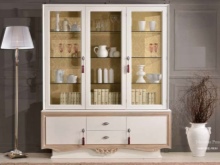
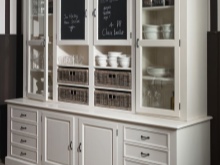
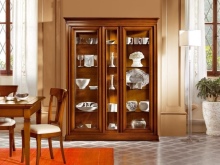
But no matter what exclusive moves furniture designers use, they should not violate the main requirement: ease of use of the sideboard. After all, it is needed for purely kitchen work. And if the product turns out to be impractical, no design tricks will help here. Most often, the sideboard is designed in exact accordance with the design of all furniture and the room as a whole. You will have to choose very carefully whether to combine the wardrobe with tables, chairs, armchairs, and so on.

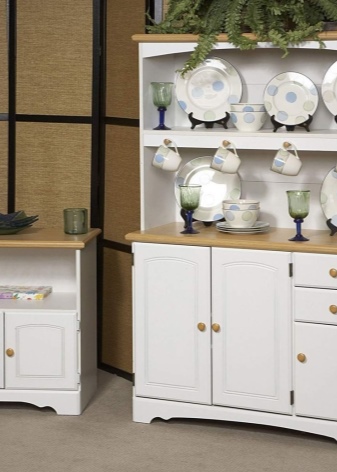
A bold and original design approach often involves the use of a bright, catchy sideboard. In this case, it should become the only accent in the entire room. It is advisable to use materials that are neutral in color and texture for finishing. A natural wood pattern is also good. Contrast is also formed in another way - by introducing an antique sideboard into the most modern design compositions.
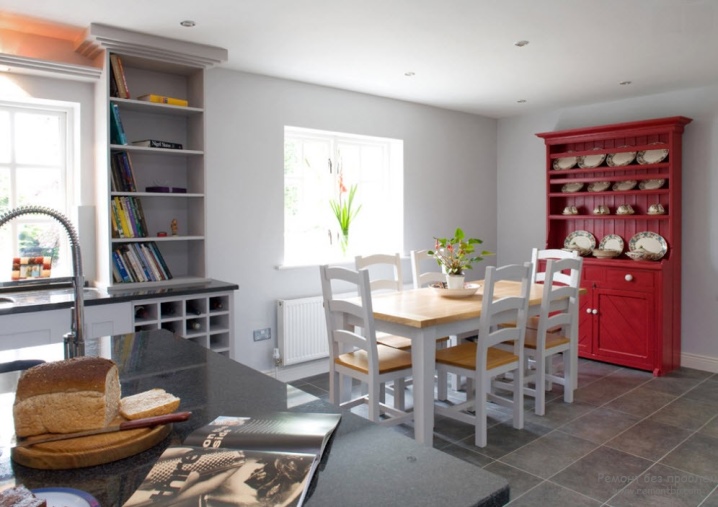
Designers, using this approach, deliberately focus on scuffs and even cracks. The more and more expressive they are, the better. Moreover, sometimes the purposeful creation of cracks and other signs of a respectable age is practiced in order to make furniture more prestigious. Then the sideboard or sideboard can become the semantic center of the composition. It is useful to describe in more detail some of the individual styles of sideboards.
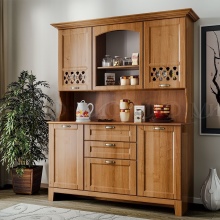
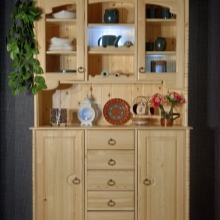
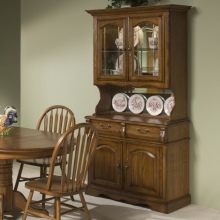
Classics usually involve the use of natural wood. And not just wood, but expensive, beautiful looking species.
It's just ridiculous to talk about chipboard or MDF, exclusively natural solid wood will do. Those who try to get out of the situation with the help of veneered structures are deceiving themselves.

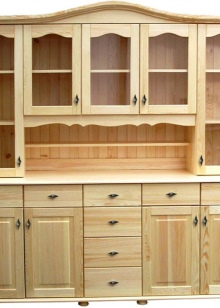
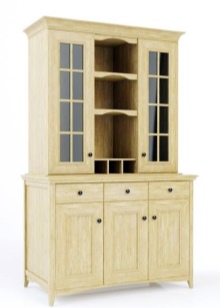
In a classic sideboard, storage is most appropriate:
- crystal;
- porcelain;
- tableware made of Venetian glass.
If there are no such sets in the house (and not even expected), it is worth choosing products that are simpler and cheaper. A flawless classic wardrobe immediately draws attention to:
- saturation of textures and richness of colors;
- frequent use of carving and decorative details;
- using bent and twisted legs;
- curly elements;
- the predominance of golden, milky or chocolate colors.
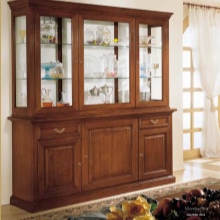


Natural green (grassy) color will be quite appropriate in the Provencal room. Sideboards for such an interior are also painted in lilac, milky or pink colors. The images on the facades are varied - these are single flowers, and large cities, and lawns covered with flowers. In the Provencal interior, relatively cheap MDF structures can be used. Some designers provide decorative wooden elements.

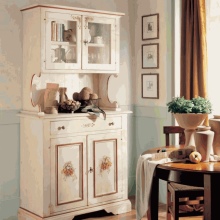
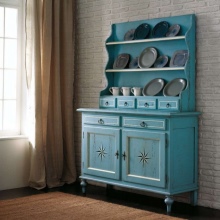
Many people mistakenly confuse shabby chic with Provence. But furniture of this style began to be used not earlier than the end of the 20th century. Shabby chic sideboard shapes are simple and deliberately rude. Sand and mint colors predominate.
It is not necessary to exaggerate the roughness of the performance, since the style of shabby chic provides for the preservation of romantic notes.
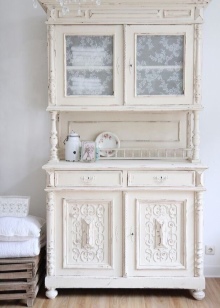

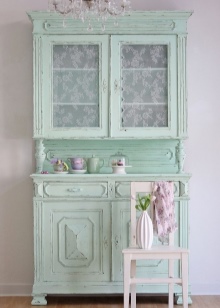
They often give preference to models that do not have doors. Open shelves are a typical feature of the English style.
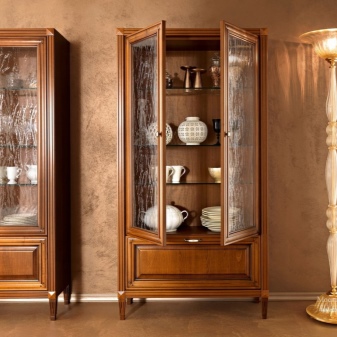
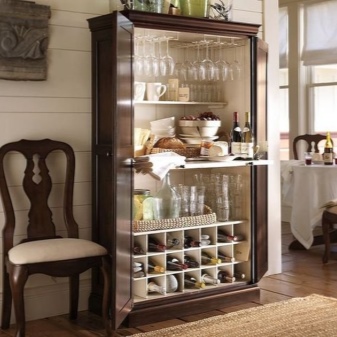
Attention: regardless of the style chosen, you will have to use black sideboards with the utmost care.
Inappropriate use of them can overload the room with dark shades. The result is a dark, unpleasant feeling.
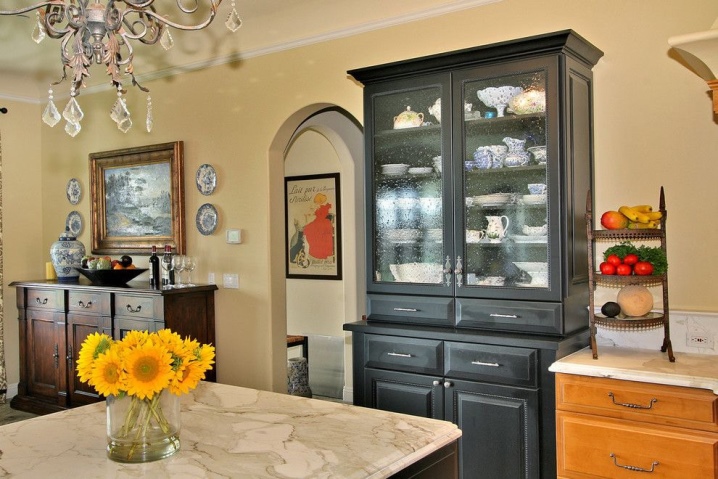
The style of the loft is chosen by those who appreciate at the same time:
- practicality;
- simplicity;
- wide space in the room;
- abundance of light;
- ease of handling furniture.
Considering all this, by the way, very dark or bulky structures cannot be placed in a loft-style room. The abundance of carved details and graceful inserts is contraindicated. These design tricks only distract from perspective. But the use of emphasized rough, aged wood is very much encouraged. It will fit effectively into the loft environment.

Separately, it should be said how to choose furniture for the style of a particular decade. Growing nostalgia makes this moment all the more relevant. So, people inspired by the examples of the frivolous 80s should choose polished products - and certainly on thin supports. The top must be glazed; inside they put various trinkets, decorative figures, and the more space for such a "home exhibition", the better.
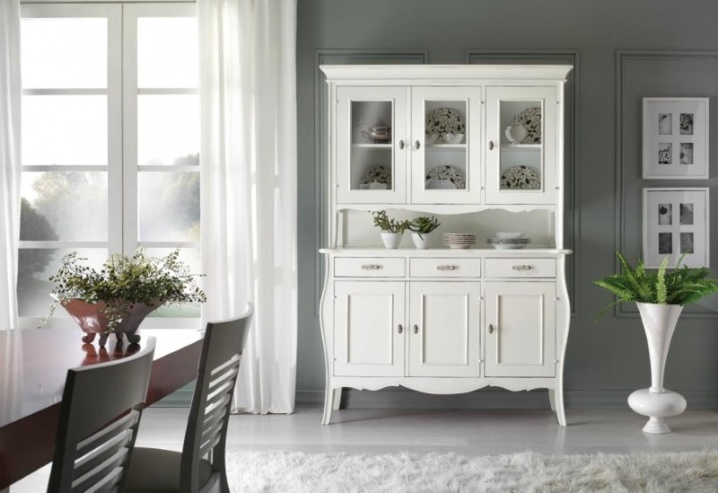
Furniture in the spirit of the "rocket 60s" expresses the motives of freedom and youth, relentless movement forward. You can safely experiment with rich colors and even completely non-standard shades. It is logical to choose a sideboard decorated in the style of abstract impressionism. Do not be afraid of "style shock" - the imitation of the 60s suffers the most extraordinary combinations in the interior. But we must not forget about other characteristic features:
- active use of geometric and floral ornaments;
- color saturation;
- graceful and ergonomic geometry of all furniture as a whole;
- triangular or cone-shaped legs;
- combining fixed and movable elements.
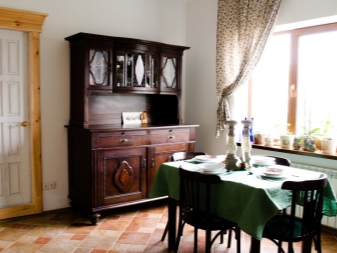
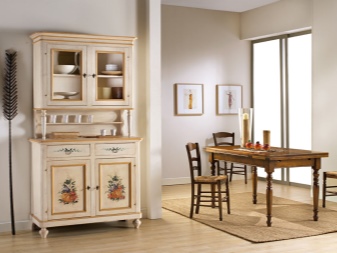
The furniture in the style of the 50s is also noteworthy. Then they actively used bright colors and bold combinations. It was quite possible to find red and yellow, orange and blue, dark brown cabinets and sideboards. Graphic prints will be common in 1950s style. Imitation of her forces us to abandon expensive materials.
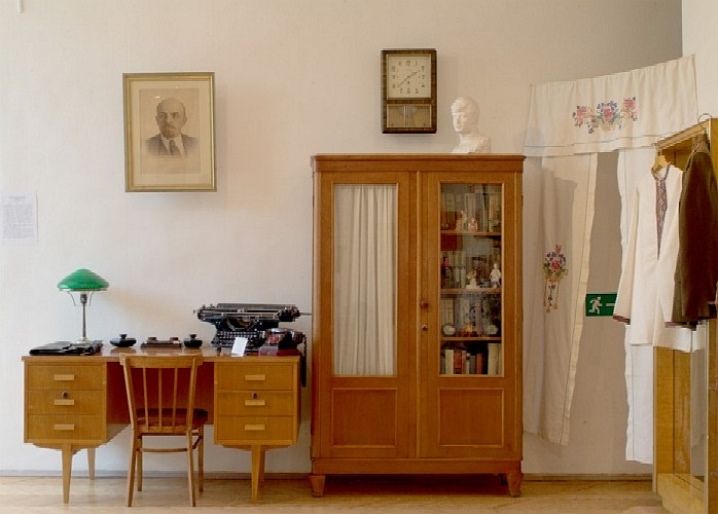
In the kitchens of the 1950s, glossy surfaces were widely used for the first time. They tried to make the legs thinner so that all the furniture seemed lighter and seemed to float in the air. The striving to round the corners was also a symbolic feature of the era. It would be logical to put a turntable or a medium-sized vase inside the sideboard (even if they turn out to be in a purely decorative role). Sideboards in the spirit of the 1950s are often fitted with sliding glasses.
How to choose?
The choice of a sideboard in the kitchen, in the living room and in the hall is always subject to a single requirement: it must correspond to the general spirit of the room and its purpose. That's why in the kitchen, it is necessary to use moisture-resistant furniture that will not be damaged by hot water vapors and even splashes of oil or grease... Ease of cleaning is also important. But in living rooms, the external grace of furniture will be in the first place (although in the kitchen it is also relevant). At the dacha, you can even choose the simplest and cheapest models, if only they fit in functionality.
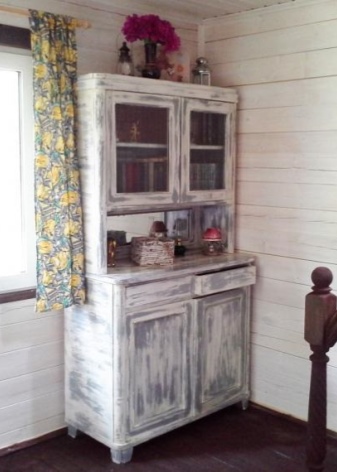
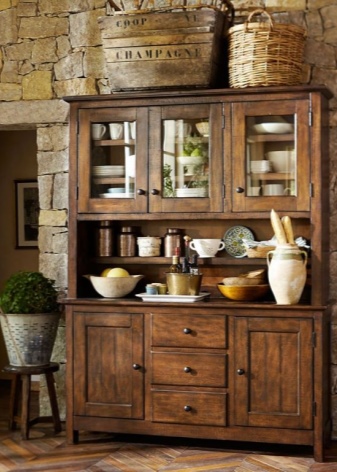
The next moment is the choice between collapsible and non-collapsible cabinets. The second option is stronger and more stable. However, it is unlikely to please those people who are forced to move frequently. For eco-style, only a sideboard based on natural high-quality wood is suitable. It should be decorated with carvings and painted elements.
Of course, the more things you plan to store, the larger the closet should be. However, you should not order too large furniture. Sometimes it is more advisable to purchase a second sideboard or additional storage system. When buying a finished product in a store, you should not immediately give preference to copies with reduced prices. Discounts are often triggered by the desire to sell defective or out-of-order items.
The smaller the room, the simpler the furniture design should be. Of course, to the extent that it fits the style. It is very important to check the quality of the material and the reliability of all connections. You will have to evaluate the characteristics of both the main frame structures and glass. And, as with the choice of other furniture, it is better to go to a reputable store or to a large furniture factory for a sideboard.
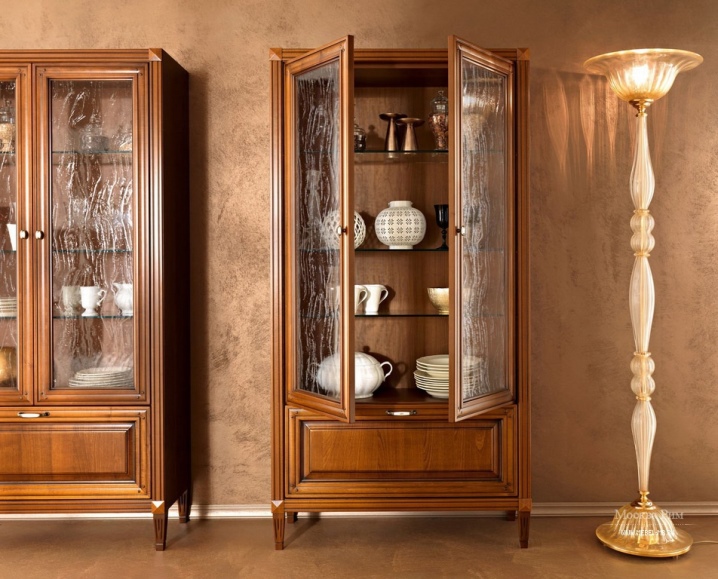
How to arrange the dishes beautifully?
When a sideboard is bought or made to order, you also need to properly arrange the dishes in it for storage. What is heavier, it should always be on the lower tier. As a last resort - on the second from the bottom. Things that are used constantly, or designed to become the main filling of space, are placed at the height of a raised hand. The upper shelves are reserved for periodically used items.
But ceramics cannot be kept in a closed compartment, as the clay needs air. The heaviest items of dishes are fixed additionally. This is especially true if they can only be placed in unstable places. What is higher is placed backwards, and what is lower is placed forward.
You should not only display dishes - there should always be candlesticks, figurines and other decorative items.
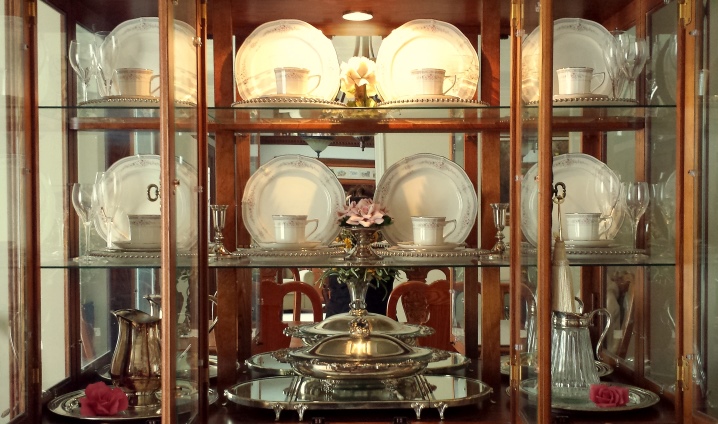
But there is no place for artificial flowers in the sideboard.They will only draw all the attention and ruin the composition. It is recommended to dilute single-colored dish rows with multi-colored inclusions. Symmetrically placed paired objects will add balance and harmony. But all these rules "will not work" if there is no free space, and the dishes are not visible from all sides, or something is put even with small chips.
Beautiful examples in the interior
This is what a great sideboard looks like for a living room. Divided into two parts (open dish and closed bottom), the cabinet looks very attractive. It fits harmoniously into a bright room. At the same time, even the combination of a light color of the upper tier and a relatively dark floor turns out to be attractive. The discreet filling of the space is emotionally relaxing.
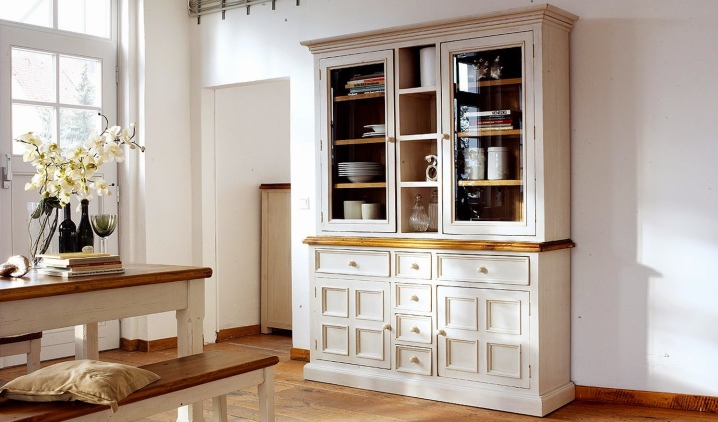
If the previous version is focused more on the Provence style, then this is already an impeccable classic. Pompous and pompous, but classic. Stucco and carvings create an optimal impression. It is worth emphasizing the active use of the contrast principle by designers. Moderately light sideboard perfectly matches the dark color of the floor and walls.
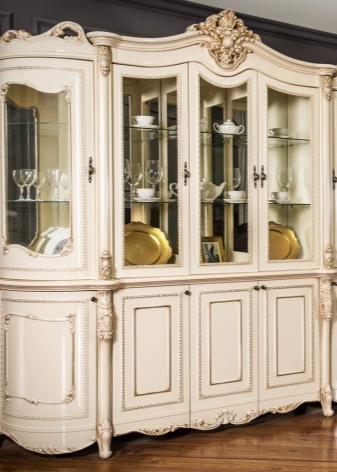
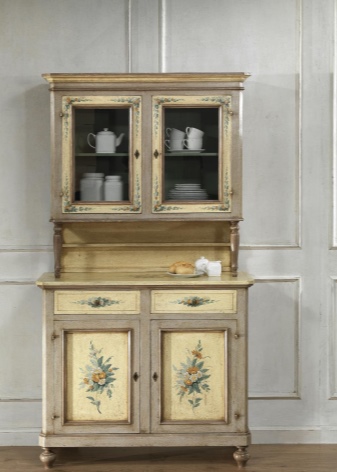
And this is what a sideboard made of noble mahogany looks like. The interior and background of the cabinet look very good. The "chiseled" legs and several carved elements are skillfully used. The sideboard is in perfect harmony with the floor of the room. It forms an equally good combination with gray walls.
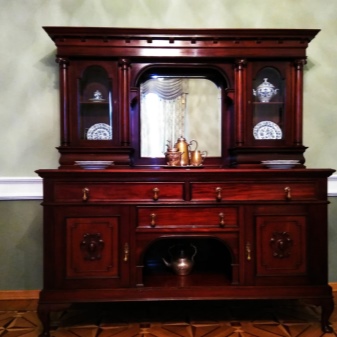
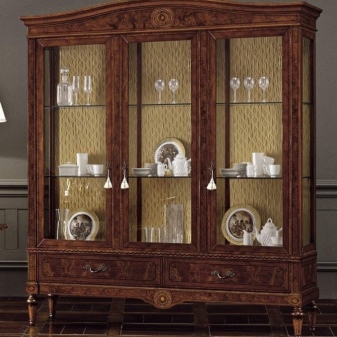
A classic-style sideboard is presented in the video below.













The comment was sent successfully.